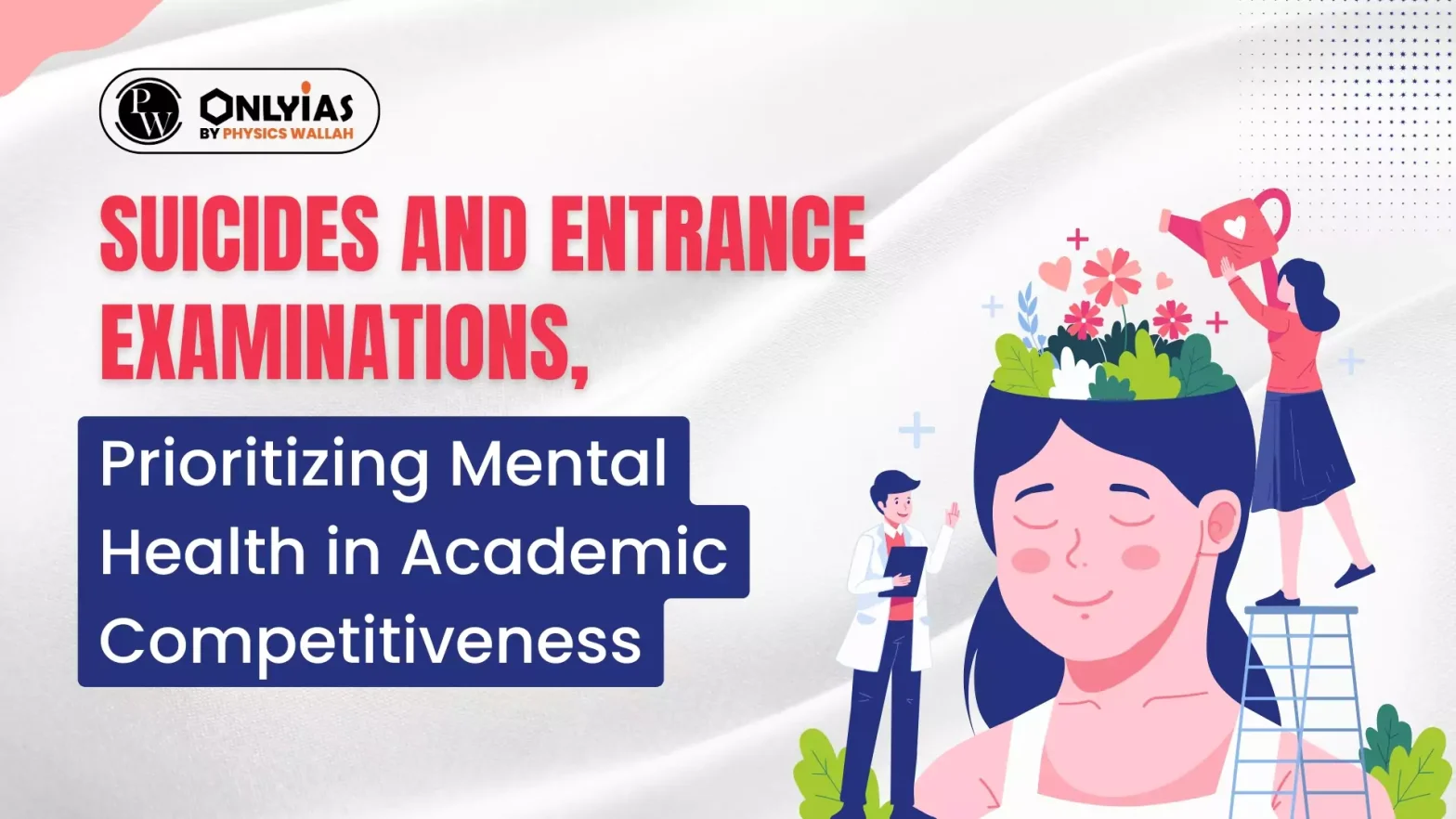Context
Recent suicides in Kota, Rajasthan, attributed to academic stress, particularly from competitive entrance examinations, have raised concerns about the well-being of young students.
Suicides and Entrance Examinations, Impact of Coaching Institutes
- Prioritizing Academic Success Over Social Development: The rise of coaching institutes, and the often “inhuman” methods adopted at these centres, prove to be too much for young people to cope with.
- Often, those students who make it through these extremely competitive examinations have “lost out” on a normal adolescent or teenage life.
- Intense Study Environments: These institutes, characterized by intense study schedules and unhealthy environments, contribute to the mental and physical strain experienced by students.
- Unhealthy Conditions in Coaching Centers: Frequently, these Coaching centres operate in substandard and hazardous structures.
- In some instances,the residential coaching centres that enroll students as young as Class 10, or even lower, under State board or CBSE schools, deprives students of their lives and rob them of a typical childhood.
Enroll now for UPSC Online Course
Challenges of Entrance Examinations
- Neglecting Holistic Development: The introduction of the Common University Entrance Test (CUET) and similar standardized exams overlooks the holistic development of students and places undue emphasis on test scores.
- Exam Performance vs. Academic Readiness: Despite the abundance of coaching centers guaranteeing success, the caliber of students entering higher education institutions remains worrisome, suggesting a gap between exam performance and academic readiness.
- Financial Strain on Parents: Several parents, including those of first-generation learners, who have been taken in by these advertisements, often taking loans they can ill-afford in the hope of securing a seat for the undergraduate or postgraduate programme.
Way Forward
- Addressing the Root Causes:
- Societal Pressure: The stress experienced by students originates from societal norms, encompassing family expectations and the focus on academic achievement.
- Addressing Student Stress:Although certain factors such as family pressure may necessitate broader societal changes, other stressors can be alleviated through reforms in examination systems and educational policies.
- Improving Government Schools: To alleviate the pressure on students, government schools need to be improved through measures such as recruiting qualified teachers and upgrading infrastructure.
- Equalizing Education Boards: State, CBSE and other boards should be brought on a par instead of negating the 12 years of effort put in by students through an examination like the CUET.
- Reevaluating Entrance Exams: If necessary, a common entrance exam can also be considered
- Incorporating Personal Interviews: Entrance examinations should incorporate personal interview components to assess students’ non-academic skills and talents.
- Personal interviews offer students an opportunity to showcase their abilities beyond test scores, promoting a more holistic evaluation process.
- Comprehensive Evaluation: The inclusion of personal interviews alongside academic scores can help mitigate the negative effects of exam stress and provide students with a sense of worth beyond their marks.
- Prioritizing Student Well-being:Teachers, parents, policymakers, and legislators must prioritize the well-being of young students and advocate for reforms that prioritize their mental health and holistic development.
Enroll now for UPSC Online Classes
Conclusion
Without addressing the underlying causes of student stress, the alarming trend of student suicides will continue, jeopardizing the future of India’s youth.
![]() 15 May 2024
15 May 2024

